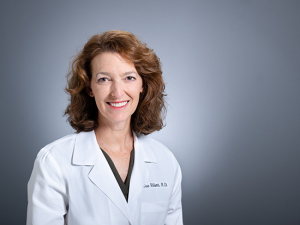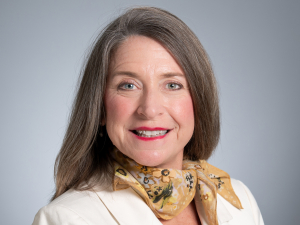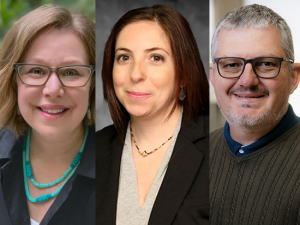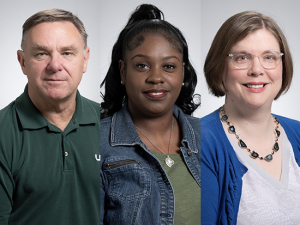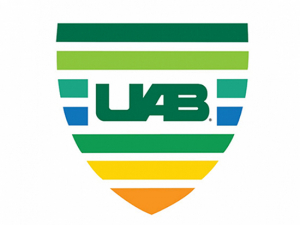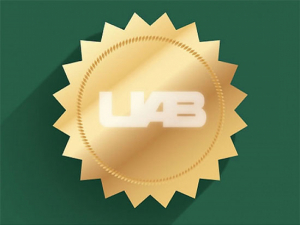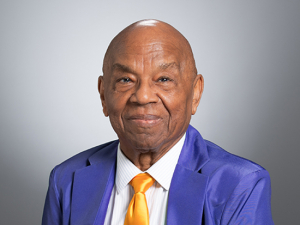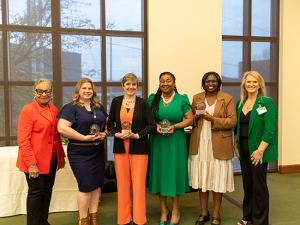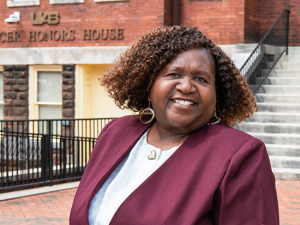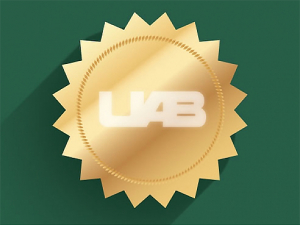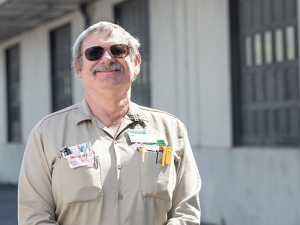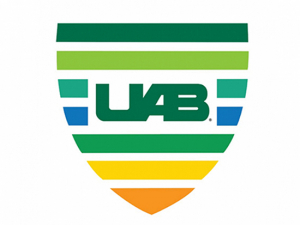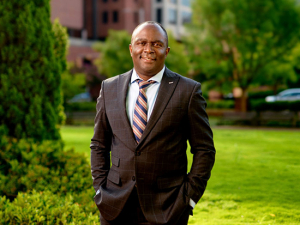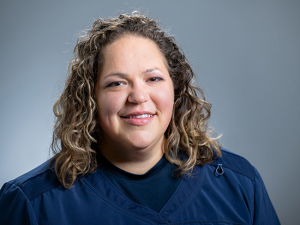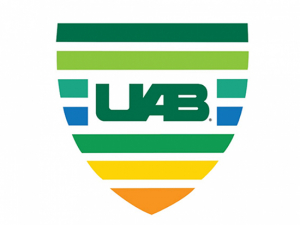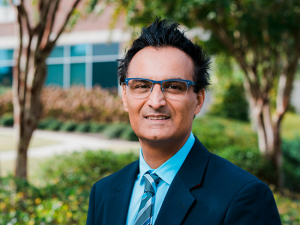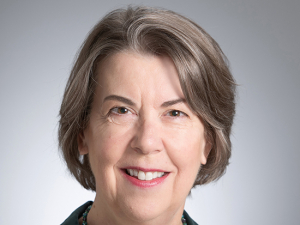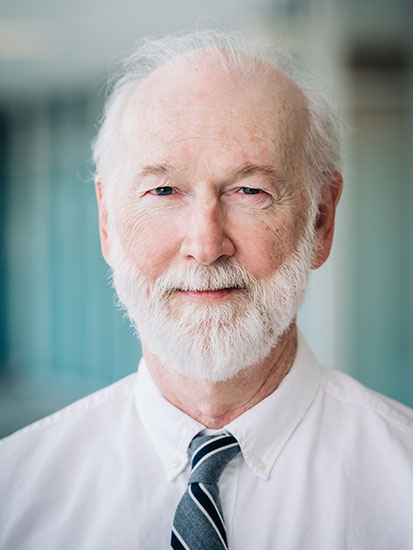 Summarizing his 30 years at UAB, Casey Weaver, M.D., professor and Leonard H. Robinson Endowed Chair in Pathology in the Department of Pathology, uses a bit of understatement. “We’ve had a pretty good run,” he said.
Summarizing his 30 years at UAB, Casey Weaver, M.D., professor and Leonard H. Robinson Endowed Chair in Pathology in the Department of Pathology, uses a bit of understatement. “We’ve had a pretty good run,” he said.
Pretty good? There are the publications — closing in on 200, including papers in all the top-tier journals. In a landmark 2005 study, Weaver’s lab reported the existence of a third type of T helper cell — a new character among what Weaver calls “the generals of the immune system.” Weaver and that Th17 cell type are now synonymous among immunologists. The discovery has led directly to a new class of treatments, including IL-17 antagonists, for several autoimmune conditions. One anti-IL-17 drug is already FDA approved to treat psoriasis, as well as the autoimmune disorder that has affected Weaver since medical school. (That drug is Cosentyx; you have probably seen its commercials featuring 1980s pop star Cyndi Lauper.) More IL-17 antagonists and other drugs that target the Th17 pathway are in clinical trials.
Weaver has received plenty of accolades, too — none bigger than his 2022 election to the National Academy of Sciences. This is one of the highest and rarest honors open to scientists in the United States. Before Weaver, only two other UAB researchers had been selected for what many call the “science hall of fame.” But none of this would have been possible without his colleagues, and the students who have come through his lab over the past three decades, Weaver said. “At the end of the day, I am a shepherd. The best part has been interacting with these people who are a lot smarter than I am.”
“Really exciting discoveries”
Weaver’s contributions as a scientist and mentor, along with his service to UAB, have earned him recognition as the latest recipient of the annual Distinguished Faculty Lecturer Award. This is the highest honor bestowed by UAB’s academic health center on a faculty member who has advanced the frontiers of science and made outstanding contributions to education, research and public service.
Weaver will deliver his Distinguished Faculty Lecture April 12
The lecture begins at 4 p.m. in the Alumni Theater at the Hill Student Center. Doors open at 3:30 p.m. Registration is required.
“Dr. Weaver is a premier physician-scientist, whose research into the developmental decisions of CD4 T lymphocytes has led to new insights into the pathogenesis of autoimmunity, and new therapies for treating autoimmune diseases and cancer,” said George Netto, M.D., professor and Robert and Ruth Anderson Endowed Chair of the Department of Pathology. “He has also pioneered methods for tracking the fate of CD4 T cells and defining the genetic elements that control key immune regulatory cytokine genes. Dr. Weaver was among the first to appreciate the role of the microbiome and nuclear receptors in T cell biology, an emerging area that will lead to innovative discoveries.”
Don’t expect a farewell address when Weaver delivers his Distinguished Faculty Lecture on April 12, however. His run, as he calls it, is not over. “I’m not there yet,” he said. Several studies currently “very active” in his lab “have led to some really exciting discoveries that should be published in the next few years.”
“My feeling was that you have to understand how CD4-positive T cells work — how they become activated and do what they do to control immunity. They really are the generals of the immune system.”
From “nobody” to T-cell biologist
Weaver grew up in Gainesville, Florida, and graduated from the University of Florida in 1979 with a degree in biochemistry. He knew he wanted a career in science but was still debating what to do next when he spent a year post-graduation in Chapel Hill, North Carolina, while his wife, Cynthia, a classically trained pianist, completed a master’s degree in piano performance. He decided on medicine and graduated from UF’s College of Medicine in 1984, specializing in pathology partly due to its focus on the mechanisms of disease. Also, “I was really influenced by great textbooks that I loved, and my favorite was Robbins and Cotran’s ‘Pathologic Basis of Disease,’” Weaver said.
It was during his residency training at Washington University in St. Louis, Missouri, that Weaver discovered his niche. “I was a nobody in terms of my background and did not have much research training,” Weaver said; but “through the luck of the draw and timing,” he ended up in the lab of noted immunologist Emil Unanue, M.D., who had recently been hired from Harvard University to lead Wash U’s Department of Pathology. Unanue’s lab was studying the process of how the body reacts to antigens, which are “foreign proteins that the body is going to mount a response to,” Weaver said. Unanue’s interest was in antigen-presenting cells, which grab pieces of antigen and display them to the T cells that coordinate the immune system’s response to the threat. “They wanted someone in the lab to clone T cells but had not been able to do it,” Weaver said. He was successful, “and as I got more educated in immunity, I became the black sheep of the lab, because I was much more interested in the T-cell side than the antigen-presenting-cell side.”
“They wanted someone in the lab to clone T cells but had not been able to do it.... As I got more educated in immunity, I became the black sheep of the lab, because I was much more interested in the T-cell side than the antigen-presenting-cell side.”
His own autoimmune condition — ankylosing spondylitis, a form of arthritis — had helped spark an interest in immune-mediated disease. “My feeling was that you have to understand how CD4-positive T cells work — how they become activated and do what they do to control immunity,” Weaver said. “They really are the generals of the immune system.” (The opportunistic infections that kill people with AIDS are a result of the HIV virus’s targeting of CD4+ T cells; without its generals, the immune system cannot keep other attackers contained. CD8+ T cells, the other main branch, are front-line fighters, known as “killer” T cells.)
CD4+ T cells communicate their orders to CD8+ T cells, antibody-producing B cells and other immune warriors using chemical signals known as cytokines. But as Weaver and other young trainees around the country worked with the new technology of T-cell cloning, they were having similar, puzzling experiences. “It became clear that these different clones were making different cytokines,” Weaver said, which was unexpected given the then-current idea that all CD4+ T cells were alike. Then, “a big story broke,” Weaver said. “The Th1/Th2 hypothesis came out,” positing that naive CD4+ T cells differentiated into two separate subtypes, T helper 1 (Th1) and T helper 2 (Th2). “This became very exciting, because now we were starting to view this from a different perspective,” Weaver said.
Then another breakthrough came into play, courtesy of “a good friend and fellow resident of mine at Wash U, Ken Murphy,” Weaver explained. Murphy “became obsessed with creating a transgenic mouse.” (This is a mouse model engineered to express non-mouse genes, such as specific human genes of interest, which have been added to its genome by researchers.) “We had discussions about how that technology could be valuable, and he ended up generating a T-cell-receptor transgenic mouse,” Weaver said. T-cell receptors are the part of a T cell, found on its surface, that recognizes a specific antigen. “You could make it so that they all expressed the same receptors” — all recognizing the same antigen — “and then take them out of the mouse and study T-cell development driven by antigen recognition” in a lab dish, Weaver said.
“Birmingham is a great city, a great place to raise a family and just a beautiful space,” Weaver said. “I love the outdoors; growing up, I would either go to the beach or up to Smoky Mountain National Park, and this is perfectly situated between them. It’s hard to beat.”
Moving to UAB
The goal was to figure out how Th1 and Th2 started down their diverging pathways. As Weaver was pondering this question in the lab, he was also considering new paths of his own. By then, he was a junior faculty member at Wash U and he and his wife had four young children. They wanted to move closer to family in Florida, and one of their options was UAB.
A few years before, Jay McDonald, M.D., formerly director of the Division of Laboratory Medicine at Wash U, had become chair of the UAB Department of Pathology. “Jay was a good leader and a good recruiter,” Weaver recalled. “He was building the department, and there were strong historical connections between Wash U and UAB.” Birmingham was also a day’s drive closer to family in Gainesville, and McDonald’s offer “doubled my salary overnight.” Those were strong inducements; but the university, and the city, still had to win Weaver over. “Growing up in Florida, I never really envisioned myself living in Alabama,” he said. “But the mantra at UAB was, ‘If you can get them to visit, you can get them to come here.’”
For Weaver, as for so many other faculty then and now, that proved true. “Birmingham is a great city, a great place to raise a family and just a beautiful space,” Weaver said. “I love the outdoors; growing up, I would either go to the beach or up to Smoky Mountain National Park, and this is perfectly situated between them. It’s hard to beat.”
The Weavers arrived in 1992, with Murphy’s transgenic T-cell mouse model and a “small group of former Wash U compatriots” already in the pathology department, particularly Pat Bucy, M.D., Ph.D. “We started using these models to ask questions and look at cytokines produced at the single-cell level,” Weaver said. “Pat had developed techniques for multi-in-situ labeling” of cytokines, which helped illustrate that “these cells were not all doing the same thing.” Weaver, wanting to isolate CD4+ T cells to see how they differed, developed “reporter mice that could report with surrogate markers when they were creating cytokines.” Each of these tools was necessary to the breakthrough that followed.
At this point, a new strand of research appeared. “I was fortunate to connect with some other immunologists and really got interested in T-cell responses in the intestines, and particularly the intestinal mucosa,” Weaver said. “We were just beginning to understand the extent and importance of the microbiome.” This posed a particularly interesting question for a T-cell biologist, Weaver notes: How can all of these foreign bacteria be co-existing with the T cells that swarm at the junction of the intestines and the rest of the body? “How does the immune system cope?” Weaver asked.
Story continues after box
Th17: One of the last missing links
In a landmark 2005 study, Weaver’s lab reported the existence of a third type of T helper cell: Th17, joining Th1 and Th2. That paper has been cited more than 6,000 times and selected as one of the top 100 immunology papers published from 1990 to 2010 by Thomas Reuters. Th17 “is largely dedicated to the eradication of extracellular bacteria and fungi,” Weaver said. “We had found one of the last missing links of immune regulation. That put us on the map, scientifically.”
“That put us on the map”
In the two decades since the Th1/Th2 hypothesis had emerged, “we learned a lot more about what different subsets of T cells were actually doing,” Weaver said. “It became clear that they had evolved to oversee immune responses to different classes of pathogens. Th1 is largely dedicated to eradication of pathogens that have evolved the capability of living inside macrophages,” the immune cells that consume invading cells. “Th1 enhances the microbe-killing ability of macrophages,” Weaver said. “Th2 oversees the eradication of multicellular parasites — helminths and worms. But there was a big hole in our existing paradigm: What about extracellular bacteria that can cause problems without overturning macrophages? What was the T cell dedicated to that? There were hints that there might be other subtypes out there. In particular, two cytokines had been discovered — IL-23 and IL-17 — that appeared to be linked around a new set of CD4+ T cells that no one understood.”
This was the state of affairs when Weaver’s lab published its 2005 paper in Nature Immunology, which included “our demonstration of what we called Th17 cells,” Weaver said. Th3 would have been the obvious name to use, but researchers at Harvard had already taken the name for a group of cells they identified (which ultimately did not turn out to be a distinct subtype). “We didn’t want to use Th4, so we ended up going with Th17, because that was their signature cytokine,” Weaver said. It also became the Weaver lab’s signature study, cited more than 6,000 times and selected as one of the top 100 immunology papers published from 1990 to 2010 by Thomas Reuters.
The UAB discovery and further explorations of the Th17 pathway revealed that Th17 “is largely dedicated to the eradication of extracellular bacteria and fungi,” Weaver said. “We had found one of the last missing links of immune regulation. That put us on the map, scientifically.”
One reason Th17 had remained hidden so long was that “it is a chameleon,” Weaver said. “Th17 is pretty unstable as a cell population, and there are good reasons for that in host defense, we think. They tend to transdifferentiate, to change their colors. As they mature, they can transition into Th1 cells. One implication of that transition is that, once they go down that path, they don’t come back. And it is these Th1 cells from Th17 precursors that are really important in driving certain aspects of autoimmune diseases.”
New treatments designed to interfere with cytokines that activate or are produced by Th17 cells, “have been a major advance in immune-mediated diseases,” Weaver said. “By better understanding the underlying biology that is responsible for these dysregulated immune responses, we can interfere in those pathways.”
Ironically, one of the first autoimmune disorders to be successfully treated through the IL-17 pathway was ankylosing spondylitis, “the disease I developed in medical school,” Weaver said. “In a funny sense, I have contributed to the treatment of my own disease, which was never the plan.”
"In the end, it’s hard to leave Birmingham.... UAB is a very collegial and entrepreneurial place, which I like. You don’t have the academic snobbery that you find in some other institutions, and that suits my personality.”
“More work to be done”
The plan for Weaver’s lab is to continue following Th17. “There is more work to be done to interfere in this complex pathway, and hopefully some of our research will drive that down the road,” he said. “We are very interested in how the transition from Th17 to Th1 takes place and what some of the signals are.”
In recent years, the Weaver family has experienced its own transitions. With their children grown, Casey and Cynthia have traded their Homewood home for a Homewood condo, which makes it easy to “shut the door and head to the mountains or the beach,” he said. Over the years, there have been offers to move to other institutions; “but in the end, it’s hard to leave Birmingham,” he explained. “I have had great trainees and great colleagues. UAB is a very collegial and entrepreneurial place, which I like. You don’t have the academic snobbery that you find in some other institutions, and that suits my personality.”
While he says the impact of his work has been gratifying, Weaver seems most interested in uncovering the next chapter in the Th17 story. “I certainly appreciate being involved in the development of these discoveries with translational potential, and I am actively involved in a couple of companies,” he said. “That is the real reason I went into medical science; I felt like that is how you can have the biggest impact on people in need. But the major focus of what I do is still basic discovery. I just want to figure out how it all works.”
